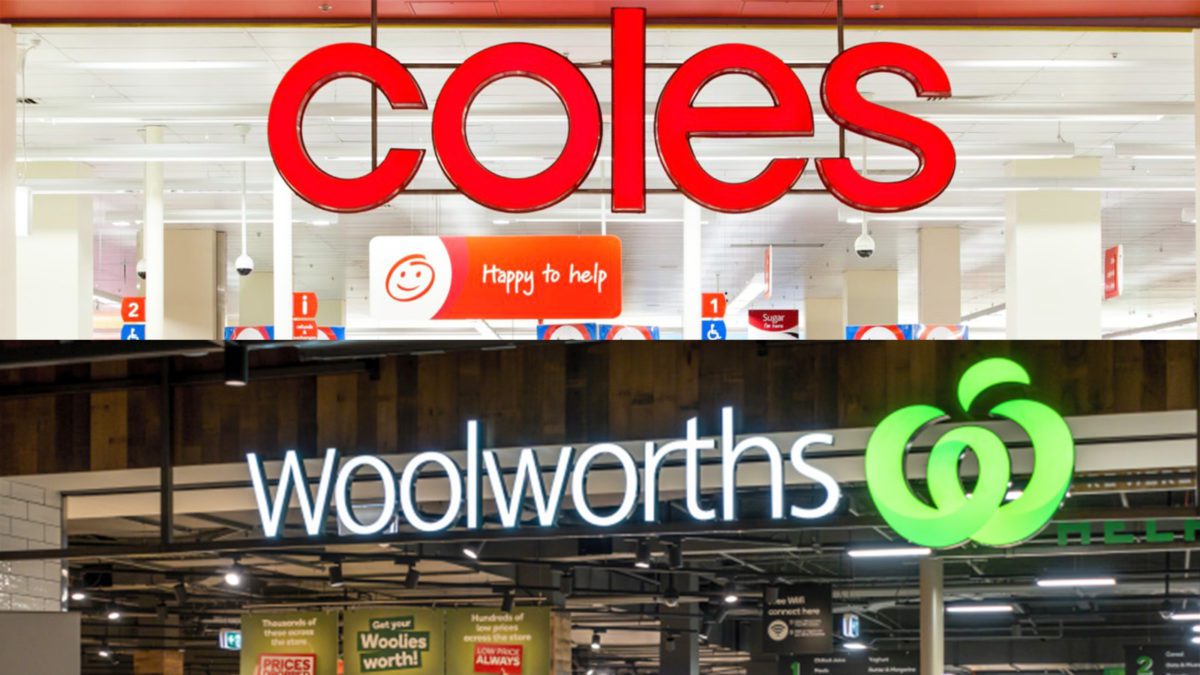Jump in grocery prices supports supermarket profits, for now
Rising grocery prices have benefitted the earnings of supermarkets, with Coles and Woolworths reporting a big jump in earnings margins and profits, though both could moderate next year as trading conditions normalise according to analysts.
Grocery retailer Woolworths produced a $1.5 billion dollar profit for the 2022 financial year. Full year sales jumped by almost 10 per cent to $60.8 billion and its margins in its Australian food division expanded to 30.4 per cent up from 29.7 per cent.
Coles too revealed a bumper $1.05 billion profit last month off the back of $39.4 billion in revenue, of which most came from its supermarkets at $34.6 billion. Overall inflation at the supermarket was 1.7 per cent for FY2022, though the company said inflation jumped to 4.3 per cent in the fourth quarter while fresh food inflation rose to 4.7 per cent, driven up by higher wheat and fresh produce prices, due to the Queensland and NSW floods restricting supply.
Sales growth could normalise
Morningstar analyst Johannes Faul says while rising grocery prices have boosted supermarket earnings over the 2021-22 fiscal year, he expects the trading environment in the Australian food industry to normalise by fiscal 2024. Profit margins could contract given rising costs and, as people head out to restaurants to east, grocery sales growth could moderate.
“Inflation in costs and shelf prices, more out-of-home food consumption and declining sales volume, evaporating COVID-19 expenses – these are the three key challenges and opportunities we see for Australian supermarket operators in fiscal 2023,” says Faul, who expects a slight decline in operating margins for Woolworths and Coles.
“We expect earnings growth for the Woolworths group of 12 per cent for and -1 per cent for Coles; Woolworths has more earnings momentum because they have Big W, which will do a lot better in FY2023 than they did in FY2022. Sales growth was just under 30 per cent for Big W for the first eight weeks of this financial year, which is driving that earnings per share outperformance of Coles.”
Morgans analyst Alex Lu also says cost pressures will weigh on Woolworths’ profit next fiscal year. He has decreased his forecast underlying earnings forecast and net profit after tax forecast by 1 per cent and dropped his target price to $37.25 from $40.35, reflecting a more uncertain economic outlook with staff absenteeism and cost of living pressures for customers playing a role.
“While we retain our Hold rating we continue to see Woolworths as a good, defensive business that should perform relatively well if macroeconomic conditions worsen,” Lu says.
Lu is more upbeat on Coles, a price target of $20, with an Add recommendation given it is less expensive than Woolworths, which is trading on a price-earnings (P/E) multiple of 27 compared to Coles.
“Trading on 22.6 FY23 P/E and 3.6 per cent yield, we continue to see COL as offering good value with the company possessing defensive characteristics that should hold up relatively well in a weaker economic environment,” Lu says.
In contrast, Faul says both Coles and Woolworths are overvalued. He gives Woolworths a fair value at $26,50, compared to its price around $36.00 and Coles fairly valued at $13.60, compared to its price of around $18.00.
Retail sales continue to rise
The times are good for many retailers, not just the supermarkets. According to data released this week by the Australian Bureau of Statistics, retail sales rose 1.3 per cent month-on-month in July 2022 from June to reach a record total of $34.7 billion. That was 16.5 per cent higher from a year earlier.
Ben Dorber, head of retail statistics at the ABS, said: “After slowing growth in recent months, the 1.3 per cent rise in July was the largest since the 1.6 per cent rise in March 2022. Turnover rose in five of the six retail industries in July 2022. This shows that, despite cost-of-living pressures, households are continuing to spend.”
Russel Chesler, head of investments and capital markets, VanEck, said Australian households remained cashed-up and they are continuing to spend, which will likely push the central bank to raise interest rates again in September by 50 basis points.
“Despite higher interest rates and cost-of-living pressures, households are continuing to spend, and the momentum in spending has continued notwithstanding higher interest rates and rising inflation,” Chesler said.
“Despite many people facing higher mortgage repayments, sales growth was strongest at department stores, followed by clothing, footwear, and personal accessory retailing (3.3 per cent), as well as cafes, restaurants, and takeaway food services (1.8 per cent); many Australians are buying new shoes and clothes to go out fine dining, and on other nights, they are enjoying takeaway,” Chesler added.
“The labour market remains very strong, and employment is still growing, and this is putting money in people’s pockets. We will likely need to see more official rate rises from the central bank to rein in spending, after the RBA started lifting rates too late to tackle inflation.”







